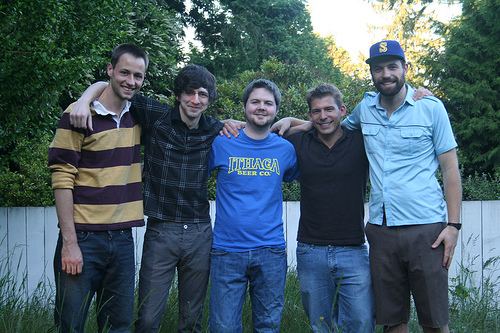Since January of this year I have had the amazing opportunity to work with the Jet Set Zero (or JS0 as we call it) team in creating, brainstorming, and mapping out the innovative concept of using social media and HD footage to document traveling around the world as cost efficient as possible. Departure time for the field team has finally arrived, and in less than 12 hours they will leave Seattle for Vietnam, their home for the next three months. As they embark on the traveling aspect of the project the “Engagment Team” of which I am a part of plan to heavily promote the project using social media to get the word out that following Jet Set Zero is worthwhile. Ever wanted to travel, but haven’t had the time or the means to do so? Follow JetSetZero to find out how they make the adventure happen.
Engagement vs. Marketing
29 07 2008Being the new kid on the block, I have found that when discussing iRM’s objectives with people I tend to oscillate between the words “engagement” and “marketing.” Initially, when cultivating this passion of helping other use Social Media to expose their brands, I used the word “marketing” almost exclusively. I mean, after all, that was iRM’s mission: to help people market their brand using Social Media. However, as I continue to meet others who share my passion as well as understanding my clients a little better, I’m beginning to think that “engagement” better fits the bill.
In “The Art and Science of Social Media and Community Relations” by Brian Solis, he opens a dialogue around marketing using Social Media. Unlike traditional marketing where you are targeting a demographic and talking “at” people, using Social Media as means to reach a wider audience means actively participating in the communities. You are not simply throwing out content and expecting the masses to lap it up. Instead, you are a part of a ecosystem that thrives on sharing information in order to move closer to a collective resolution.
By moving into this space, small businesses as well as larger companies have a chance to have a conversation with the very people who interact with their brand. The looming concern is the time that needs to be spent in these Social Media Communities. For example, when I was introduced to Twitter, I assumed it was just a glorified Facebook status update tool. I signed up for an account and rarely checked it. It wasn’t until I started following and observing people, whose blogs I read, that I began to see the power of this tool. Now, it has become a staple in my own Digital Ecosystem as I deem it highly useful for sharing quick bursts of information. Also, I found that I wasn’t simply marketing to people about my passion (iRM), but I was engaging with them on helpful tips, advice, and sharing stories about being new entreprenuers. Soon, people began to follow me, and a sense of community began to take shape.
Comments : Leave a Comment »
Tags: Digital Ecosystem, Engagement, Marketing
Categories : Uncategorized


